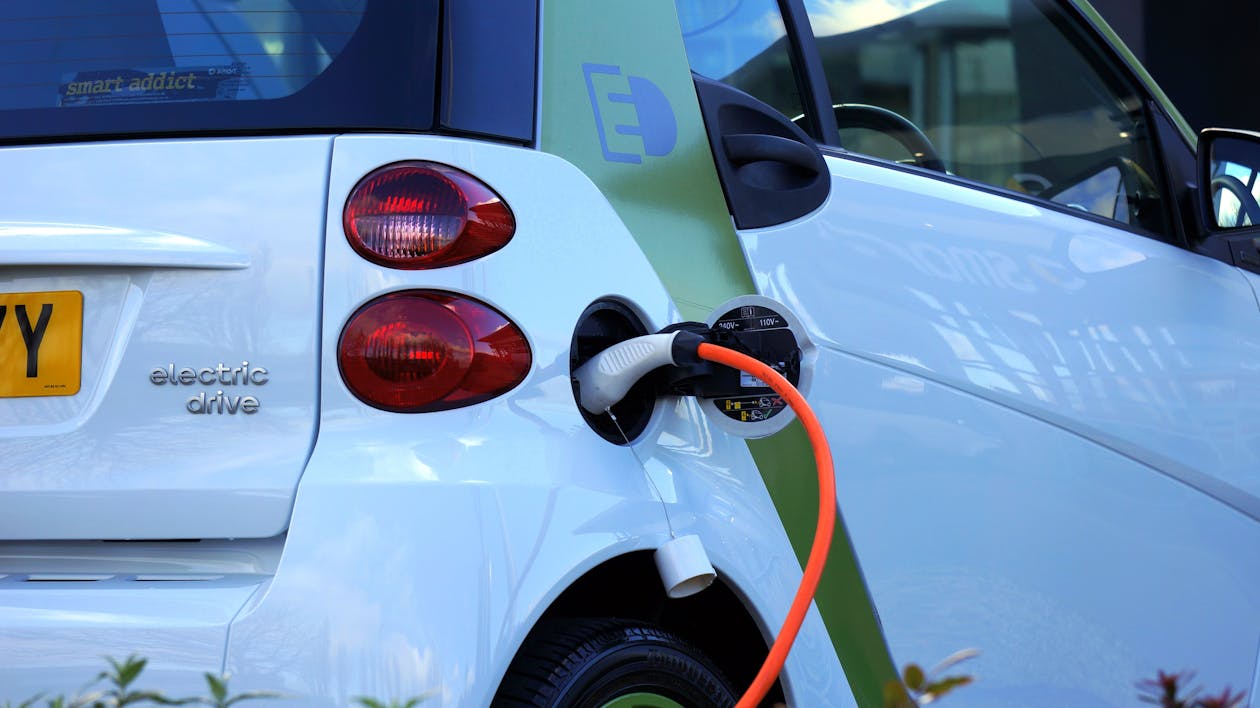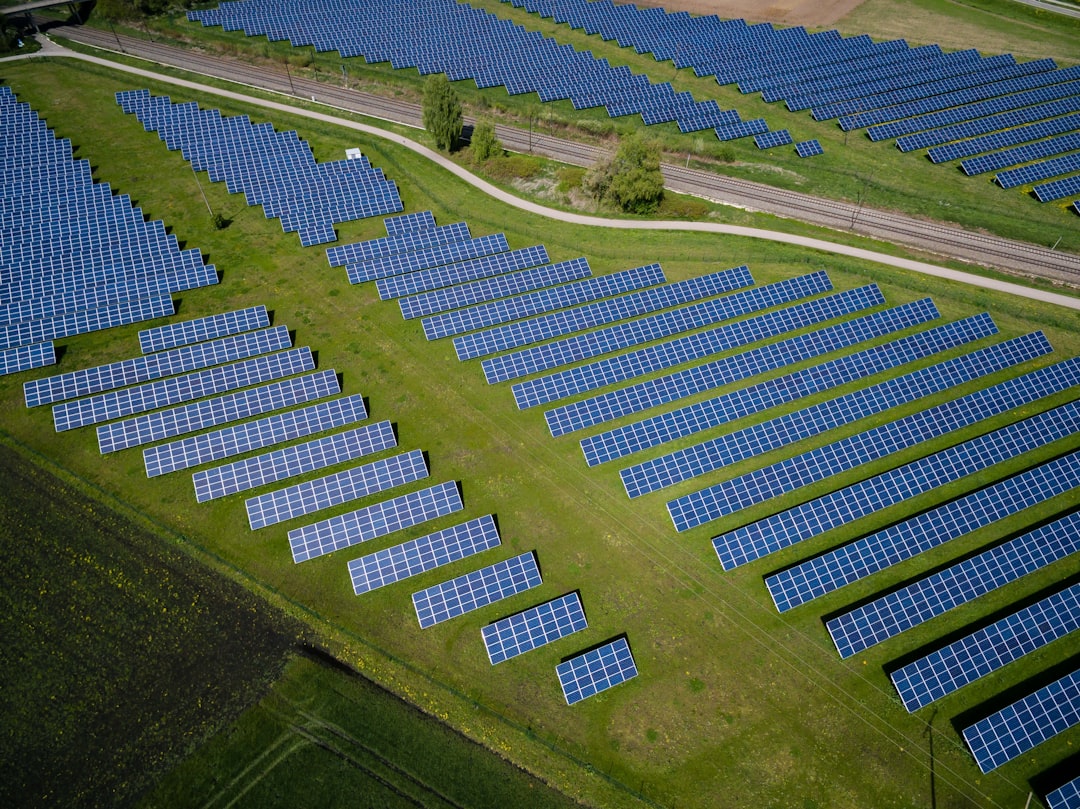Introduction
Renewable energy has become an increasingly important topic in our world today, as the negative effects of fossil fuels on the environment and climate change have become more evident. As we strive towards a more sustainable future, renewable energy has emerged as a promising solution to reduce carbon emissions and promote a cleaner, greener world.
The aim of this article is to provide a comprehensive overview of renewable energy, including its various types, forms, and sources. By the end, readers will have a better understanding of what renewable energy is, how it works, and why it is crucial for our planet’s future.
Renewable energy is defined as energy that is generated from natural resources that are constantly replenished, such as sunlight, wind, water, and geothermal heat. Unlike fossil fuels, which are finite resources, renewable energy sources are virtually inexhaustible and do not produce harmful emissions.
There are several types of renewable energy, each with its own unique characteristics and benefits. These include solar energy, wind energy, hydro energy, geothermal energy, and biomass energy. Each type utilizes a different natural resource to generate energy, but they all share the common goal of reducing our reliance on fossil fuels.
Solar energy is perhaps the most well-known type of renewable energy, and it harnesses the power of the sun to produce electricity. This is done through the use of solar panels, which convert sunlight into usable energy. Wind energy, on the other hand, uses wind turbines to capture the kinetic energy of wind and convert it into electricity.
Hydro energy, also known as hydropower, utilizes the energy of moving water to generate electricity. This can be done through dams, tidal power, or even wave power. Geothermal energy uses the earth’s natural heat to produce electricity, while biomass energy utilizes organic materials such as wood, crops, and waste to generate heat or electricity.
Renewable energy sources can also be classified into two forms: kinetic and thermal. Kinetic energy is the energy of motion, such as wind and hydro energy, while thermal energy is the energy of heat, such as solar and geothermal energy.
The sources of renewable energy are abundant and can be found all around the world. The sun, wind, and water are constantly available and can be harnessed to generate clean energy. This makes renewable energy a more sustainable and reliable option compared to fossil fuels, which are limited and non-renewable.
In conclusion, renewable energy has the potential to greatly reduce our carbon footprint and promote a more sustainable future. By utilizing the natural resources around us, we can generate clean and renewable energy that will benefit our planet for generations to come.
Sources: NRDC, Stanford University, Library of Congress
Understanding Renewable Energy
In today’s world, the topic of renewable energy is becoming increasingly important as we face the effects of climate change and the depletion of non-renewable resources. Renewable energy refers to energy sources that are naturally replenished and have a minimal impact on the environment. These sources include solar, wind, hydroelectric, biomass, and geothermal power. Unlike fossil fuels, which emit harmful greenhouse gases and contribute to global warming, renewable energy sources offer a cleaner and more sustainable alternative to meet our energy needs.
Renewable vs. Non-Renewable Energy Sources
One of the key differences between renewable and non-renewable energy sources is their availability. Non-renewable sources, such as coal, oil, and natural gas, are finite in their supply and can take hundreds of thousands of years to form. On the other hand, renewable sources are virtually inexhaustible and can be replenished naturally. This makes them a more reliable and sustainable option for meeting our energy needs in the long run.
Examples of Popular Renewable Energy Sources
There are several types of renewable energy sources, each with its own unique benefits and challenges. Solar energy, for example, harnesses the power of the sun through photovoltaic panels or concentrating solar power plants. This type of energy is flexible and can be used to power homes, businesses, and even entire cities. It is also a growing industry, with the world’s total installed capacity increasing by 4,300% in the past decade.
Wind energy, on the other hand, uses the power of the wind to generate electricity through wind turbines. It is the world’s biggest source of renewable energy and has been setting new records for electricity generation in recent years. However, wind turbines can also pose a danger to birds and bats, leading to ongoing efforts to make them safer for wildlife.
Hydroelectric power, which has been used for centuries, harnesses the energy of river currents through the use of dams. It is the most widely used renewable energy source in the world, with countries like China, Brazil, and the US leading the way. However, there are concerns about the environmental impact of large hydropower dams and their effects on local ecosystems.
Biomass energy, which includes biofuels, wood, and biogas, is another renewable source that can be used for a variety of purposes such as heating, electricity generation, and transportation. However, there are debates surrounding the sustainability and environmental impact of certain biomass sources, such as corn-based ethanol and wood pellets.
Geothermal energy, which harnesses the heat from the Earth’s core, is a steady and reliable source of renewable energy. It is used for heating and cooling buildings, as well as generating electricity. However, geothermal energy is not as widely used as other sources due to its limited availability in certain regions.
Overall, renewable energy offers numerous benefits, including reducing our reliance on non-renewable sources, creating jobs, and lowering energy bills. As governments and industries continue to invest in and develop renewable energy technologies, it is becoming an increasingly important part of the global energy landscape. However, it is important to consider the trade-offs and challenges associated with each type of renewable energy and strive for sustainable and responsible practices in their implementation.
Sources: National Geographic, National Grid
Sources of Renewable Energy
Renewable energy is becoming an increasingly popular source of energy as the world continues to face the challenges of climate change and depletion of traditional sources of energy. Unlike non-renewable sources, renewable energy is derived from natural resources that are constantly replenished, making it a sustainable and environmentally-friendly option. In this section, we will explore the various natural resources that contribute to renewable energy and how they are harnessed to produce clean and usable energy.
Solar Energy
Solar energy is one of the most abundant sources of renewable energy. It is derived from the sun’s radiation, which is constantly replenished and available in almost every corner of the world. Solar energy can be converted into electricity through photovoltaic panels or concentrated solar power systems that use mirrors to reflect and concentrate the sun’s energy.
Technological advancements in solar energy have made it more efficient and affordable, making it a popular choice for both residential and commercial use. According to the U.S. Department of Energy, the average cost of solar panels has dropped by 70% since 2010, making it a competitive option for electricity generation.
Wind Energy
Wind energy is another abundant source of renewable energy. It is harnessed through wind turbines that convert the kinetic energy of wind into electricity. Wind energy has been used for centuries, but recent advancements in technology have made it a more efficient and cost-effective option.
The U.S. Department of Energy reports that the average cost of wind energy has dropped by 70% since 2009, making it one of the cheapest sources of electricity in many parts of the world. Additionally, wind energy has a relatively low impact on the environment, making it a popular choice for countries looking to reduce their carbon footprint.
Hydropower
Hydropower is the use of water to generate electricity. It is harnessed through the force of moving water, such as rivers and waterfalls, to turn turbines and produce electricity. Hydropower is a reliable and efficient source of renewable energy, and it has been used for centuries to power mills and other machinery.
Advancements in technology have made hydropower even more efficient, with larger and more powerful turbines being developed. However, the construction of hydropower plants can have a significant impact on the environment and surrounding ecosystems. It is essential to carefully consider the location and design of hydropower projects to minimize their environmental impact.
Biomass
Biomass is derived from organic materials such as wood, crops, and animal waste. It can be converted into energy through various processes, including combustion, gasification, and anaerobic digestion. Biomass is a versatile source of renewable energy, and it can be used for heat and power production.
According to the U.S. Energy Information Administration, biomass accounted for about 5% of total U.S. energy consumption in 2020. However, the use of biomass for energy production can have environmental impacts, such as deforestation and air pollution. Therefore, it is essential to manage biomass resources sustainably to minimize these impacts.
Geothermal Energy

Geothermal energy is derived from the Earth’s heat. It is harnessed through geothermal power plants that use the Earth’s natural heat to produce electricity. Geothermal energy is a reliable and renewable source of energy, and it has a relatively low environmental impact.
Technological advancements have made it possible to harness geothermal energy in more locations, making it a viable option for electricity generation. However, the initial costs of building geothermal power plants can be high, and it may not be suitable for all geographic locations.
These are just a few examples of the natural resources that contribute to renewable energy. Other sources include ocean energy, such as wave and tidal energy, and biofuels, which are derived from biomass and used as a substitute for traditional fuels. As technology continues to advance, we can expect to see even more innovative ways of harnessing renewable energy sources and reducing our reliance on non-renewable sources.
In conclusion, renewable energy sources differ from traditional sources of energy in that they are derived from natural resources that are constantly replenished. This makes them a more sustainable and environmentally-friendly option for
Sources:
- https://www.un.org/en/climatechange/what-is-renewable-energy
- https://www.energy.gov/eere/renewable-energy
- https://www.eia.gov/energyexplained/renewable-sources/
Benefits of Renewable Energy
Renewable energy has become an increasingly common sight in today’s world, with wind turbines and solar panels popping up in various locations. But what exactly are the benefits of using renewable energy? In this section, we will explore the positive impacts of clean energy on the environment, economy, and public health.
Reduced Carbon Emissions and Global Warming
One of the most significant benefits of renewable energy is its contribution to reducing carbon emissions and mitigating the effects of global warming. The burning of fossil fuels for energy is a major contributor to the overload of carbon dioxide and other greenhouse gases in our atmosphere, trapping heat and causing a web of harmful impacts, such as stronger storms, droughts, and sea level rise.
According to the Union of Concerned Scientists, renewable energy sources like wind, solar, geothermal, hydroelectric, and biomass can significantly reduce global warming emissions. For instance, a study by the US Department of Energy’s National Renewable Energy Laboratory (NREL) found that renewable energy could help reduce the electricity sector’s emissions by up to 81% by 2050.
Furthermore, investing in renewable energy can save the world up to $4.2 trillion per year by 2030, mainly through the reduction of pollution and climate impacts.
Improved Energy Security and Resilience
Another benefit of renewable energy is its potential to improve energy security and resilience. Unlike fossil fuels, renewable energy sources are abundant and continuously replenished, making them a more reliable and stable source of energy. This diversification of power supply options can also make our energy system less prone to market shocks.
Additionally, investing in renewable energy can reduce our dependence on foreign energy sources, enhancing our energy security and reducing geopolitical tensions.
Positive Economic Impacts
The shift towards renewable energy has also brought about positive economic impacts. Compared to fossil fuel technologies, renewable energy is more labor-intensive, creating more jobs for each unit of electricity generated. In the United States, the wind energy industry alone employed over 100,000 full-time-equivalent employees in 2016, and this number is expected to continue growing.
Moreover, renewable energy can also create a ripple effect in the economy, benefiting industries in the renewable energy supply chain and increasing household and business incomes. Local governments also benefit from renewable energy through property and income taxes and other payments from project owners.
Improved Public Health

The use of renewable energy can also have a positive impact on public health. The air and water pollution emitted by coal and natural gas plants are linked to various health issues, including respiratory problems, neurological damage, heart attacks, cancer, and premature death. By reducing our reliance on these polluting energy sources, we can improve public health and prevent avoidable deaths.
A study by Harvard University estimated that the life cycle costs and public health effects of coal and natural gas plants could save the United States up to $74.6 billion annually if replaced with renewable energy sources.
Potential for Further Growth and Development
The potential for growth and development in the renewable energy industry is immense. According to the United Nations, renewable energy could provide up to 65% of the world’s total electricity supply by 2030 and decarbonize 90% of the power sector by 2050. Despite the initial costs of implementing renewable energy, it can lead to significant long-term savings and benefits.
Furthermore, the International Energy Agency (IEA) predicts that renewable energy will become even more competitive in the coming years, with the potential to provide cheap electricity and cut carbon emissions.
Summary of Different Forms of Renewable Energy
In conclusion, renewable energy offers numerous benefits, including reduced carbon emissions, improved energy security and resilience, positive economic impacts, improved public health, and potential for further growth and development. It is crucial for countries to invest in renewable energy and transition away from fossil fuels to create a safer, cleaner, and more sustainable world for future generations.
Sources:
- https://www.un.org/en/climatechange/raising-ambition/renewable-energy
- https://www.ucsusa.org/resources/benefits-renewable-energy-use
Challenges of Using Renewable Energy
Despite the numerous benefits of renewable energy, there are still several challenges and limitations that hinder its widespread adoption. In this section, we will discuss some of the key challenges faced by the renewable energy sector and explore potential solutions to overcome them.
Cost
One of the main challenges of using renewable energy is its cost. While the cost of renewable energy has significantly decreased in recent years, it still remains higher than traditional fossil fuels. This is due to the high initial investment required for infrastructure and equipment, such as solar panels and wind turbines.
However, it is important to note that the cost of renewable energy is steadily decreasing as technology advances and economies of scale are achieved. In fact, according to the International Renewable Energy Agency (IRENA), the cost of renewable energy is now competitive with fossil fuels in many parts of the world.
Furthermore, the long-term benefits of using renewable energy, such as reduced carbon emissions and energy independence, outweigh the initial cost. Governments and organizations are also implementing policies and incentives to further drive down the cost of renewable energy and encourage its adoption.
Intermittency
Another challenge of using renewable energy is its intermittency. Unlike traditional fossil fuels, which can provide a constant and reliable source of energy, renewable sources such as solar and wind are dependent on weather conditions and daylight availability.
This intermittency can pose challenges for the stability of the energy grid, as it requires balancing supply and demand in real-time. However, advancements in energy storage technology, such as batteries, are helping to mitigate this issue. These storage systems can store excess energy generated during peak hours and release it during times of low energy production, providing a more consistent energy supply.
Infrastructure

The transition to renewable energy also requires significant infrastructure development, including expanding transmission networks to connect remote renewable resources to population centers. Upgrading existing grids to accommodate bidirectional power flow and balancing supply and demand is also crucial for smooth integration.
This infrastructure development can be costly and time-consuming, but it is necessary for the widespread adoption of renewable energy. Governments and organizations are investing in infrastructure projects to support the growth of renewable energy and improve the efficiency of the energy grid.
Public Acceptance and Policy Support

Renewable energy projects often face opposition, known as NIMBY (Not In My Backyard) sentiment, due to concerns about visual impacts, noise, or potential environmental consequences. Furthermore, inconsistent government policies and regulatory barriers can hinder renewable energy growth.
To overcome these challenges, it is important to ensure public acceptance and provide stable policy frameworks. Governments and organizations can achieve this by engaging with local communities, addressing concerns, and implementing supportive policies and regulations.
Technological Innovations and Potential Solutions

Despite the challenges, the renewable energy sector is continuously evolving and finding innovative solutions to overcome them. Advancements in technology and collaborations between stakeholders are key to addressing these challenges.
One example of technological innovation is the Hornsdale Power Reserve in Australia, the largest lithium-ion battery installation. This project has helped stabilize the grid and support renewable energy integration. Similarly, the Three Gorges Dam in China demonstrates the potential of hydropower, powering millions of homes while addressing environmental concerns.
Furthermore, countries like Germany and Costa Rica have made remarkable progress in renewable energy adoption, driven by favorable policies and incentives. These case studies emphasize the importance of long-term planning, policy support, and technological innovation in overcoming challenges in renewable energy.
Future Outlook and Recommendations
Despite the challenges, the future of renewable energy looks promising. Governments and organizations are increasingly recognizing the importance of transitioning to clean and sustainable energy sources. However, to accelerate this transition, several key actions and strategies are necessary:
- Policy and Regulatory Support: Governments must introduce and implement supportive policies and regulations to strengthen the renewable energy market. This includes providing incentives and subsidies to attract investors and drive down the cost of renewable energy.
- Technological Advancements: Continued advancements in technology, particularly in energy storage systems, are crucial for addressing the intermittency of renewable energy sources.
- Collaboration and Education: Collaboration between stakeholders, including governments, organizations, and local communities, is essential for overcoming challenges and promoting the adoption of renewable energy. Educating the public about the benefits of renewable energy and addressing concerns can also help increase acceptance and support.
In conclusion, while there are challenges and limitations to using renewable energy, the benefits far outweigh them. With continued advancements in technology and supportive policies and regulations, the renewable energy sector is expected to grow and play a crucial role in
Sources:
- https://sustainablereview.com/challenges-in-renewable-energy/
- https://regenpower.com/what-are-the-problems-faced-by-renewable-energy/
The Future of Renewable Energy
The future of renewable energy is bright, with the potential to become the primary source of energy in the world. As the demand for clean and sustainable energy continues to rise, renewable energy is gaining momentum as a viable solution to combat climate change and reduce our reliance on fossil fuels.
According to The International Energy Agency (IEA), renewable energy capacity is set to expand by 50% between 2019 and 2024, with solar energy leading the way. This growth is driven by falling technology costs and increasing environmental concerns, making the argument that the future lies in using renewable energy.
Potential of Renewable Energy
Currently, renewable energy sources make up 26% of the world’s electricity, but this is expected to reach 30% by 2024, according to the IEA. This resurgence follows a global slowdown in 2019 and showcases the potential for renewable energy to overtake fossil fuels as the primary source of energy.
With ongoing efforts and investments in renewable energy research and development, the future looks promising. The IEA predicts that by 2024, solar capacity in the world will grow by 600 gigawatts (GW), almost double the installed total electricity capacity of Japan. Additionally, renewable electricity is expected to overtake Iceland’s during this period.
The commercial market is also predicted to experience significant growth in renewable energy. According to the Department of Energy, geothermal solutions are expected to generate 8.5% of all electricity in the US by 2050. This showcases the potential for renewable energy to not only power homes and buildings but also industries and transportation.
The Role of Renewable Energy in Sustainability
Renewable energy plays a crucial role in achieving a more sustainable future. It is a clean and accessible source of energy that does not emit harmful greenhouse gases, making it an essential tool in combatting climate change.
As stated by the IEA’s executive director, Fatih Birol, “Technologies such as solar and wind are at the heart of transformations taking place across the global energy system. Their increasing deployment is crucial for effo
Renewable energy also has a significant impact on creating a more sustainable and equitable economy. A report from the United Nations states that the renewable energy sector could create over 30 million jobs by 2030. This includes roles in manufacturing electric vehicles and hyper-efficient appliances, as well as in innovative technologies like hydrogen.
Furthermore, investing in renewable energy makes economic sense. The International Renewable Energy Agency (IRENA) estimates that about $7 trillion was spent on subsidizing the fossil fuel industry in 2022, while $4 trillion a year needs to be invested in renewable energy until 2030 to reach net-zero emissions by 2050. The upfront cost may seem daunting, but the reduction of pollution and climate impacts could save the world up to $4.2 trillion per year by 2030.
Conclusion
After exploring the world of renewable energy, it is clear that this form of energy is crucial for a greener and more sustainable future. From solar and wind power to biomass and hydropower, there are various types and sources of renewable energy that can be harnessed to reduce our dependence on fossil fuels and mitigate the effects of climate change.
It is important for individuals to understand the definition and various forms of renewable energy, as well as their potential for a cleaner and more efficient energy system. By supporting and investing in renewable energy, we can reduce our carbon footprint and create a more environmentally friendly world for future generations.
We encourage readers to explore and support renewable energy in their daily lives. This can be as simple as using solar panels on your roof, opting for an electric car, or supporting companies and organizations that prioritize renewable energy. Small actions can make a big impact in creating a more sustainable future.
Renewable energy is not just a trend, but a necessity for the health of our planet. By utilizing these sources of energy, we can reduce air and water pollution, conserve natural resources, and create a more resilient and reliable energy system. Let’s work together to embrace and promote renewable energy for a brighter future.
Sources: ACCIONA, REN21rts to tackle greenhouse gas emissions, reduce air pollution, and expand energy access.”



